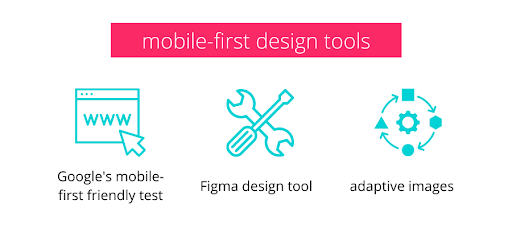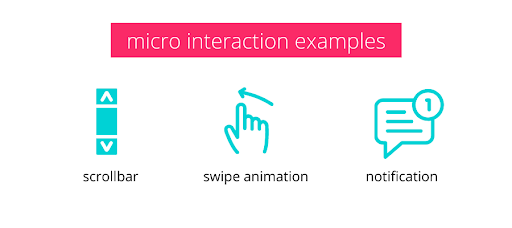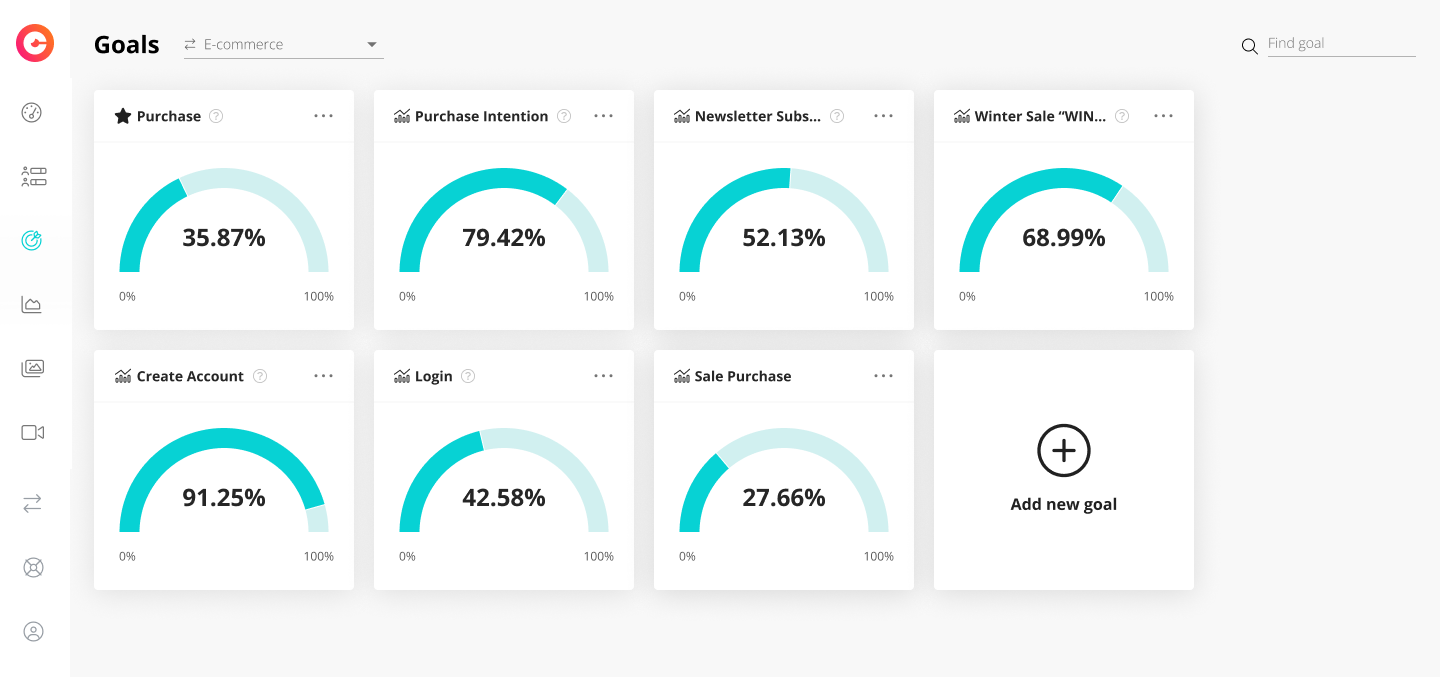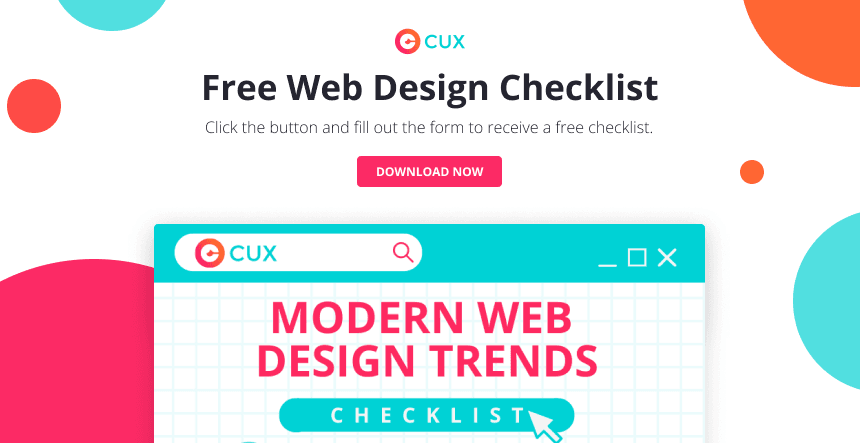Conversion Optimisation
7.03.2023
10 minutes read
Trends in UX, CRO and SXO. What do you need to design a modern website! [FREE CHECKLIST]
The digital landscape is constantly evolving, and website design is no exception. It's more essential than ever to stay up to date with the latest trends to ensure your website stands out from the competition and is modern, user-friendly and practical.

List of Contents
The digital landscape is constantly evolving, and website design is no exception. It's more essential than ever to stay up to date with the latest trends to ensure your website stands out from the competition and is modern, user-friendly and practical.
User experience (UX), conversion rate optimisation (CRO), and search experience optimisation (SXO) are some of the most important aspects of website design that play a crucial role in the success of your website. That's why should always fit in the mould of your digital marketing strategy.
In this blog, we will explore the latest UX trends, as well as CRO, SXO and what you need in today's digital landscape to stay ahead and stand out from other websites.
After reading this blog, you will have a deep understanding of the current state of, and we have added a downloadable free checklist to help you design a website.
Trends in User Experience (UX) Design
User experience design, or UX for short, is the overall user experience when browsing a website. The main goal of UX design is to create a website that is easy to use, intuitive and, most important, create an enjoyable experience for the end user.
Mobile-First Design
According to a recent study, more than half (60%) of all web traffic comes from mobile users, and this number is set to increase dramatically in 2023. Knowing this growing demand, it may be no surprise that having a mobile-first design is at the top of our list.
A mobile-first web design means that the website is designed first and foremost for mobile users and then adapted for larger screens. This approach will ensure the website is optimised for smaller screens.

Social media trends
If you want to stay on top of social media trends, then integrating social media platforms into your website is a must. It's a great way to increase your social media presence and drive traffic to your channels. Adding social media buttons or links to your website can make it easy for users to share your content on their profiles. Embedding social media feeds into your website can also provide fresh, dynamic content and social proof of your online presence. And if you want to take it a step further, paid social media advertising is a great way to drive traffic to your website. In short, integrating social media into your website is a smart move that can boost your overall digital marketing strategy.
Personalisation
Personalisation in today's age is about more than creating a unique online experience for each user. Its goal is to curate a meaningful experience that adapts the website to individual needs and preferences of your target audience. Take, for example, Amazon. One of the business leaders in e-commerce giant personalised its website by using data from previous purchases and browsing history to suggest products that match the user's interests. This makes shopping easier and more convenient and has a positive effect on the overall user experience. Most importantly it can increase consumer spending considering that over 70% of e-commerce shopping carts get abandoned.
Artificial Intelligence
Artificial Intelligence (AI) is making website design more accessible than ever before! With AI tools for data analysis, design, and more. Business owners can easily tackle almost every aspect of the design process. From automating content curation and recommendations to helping you create customer-friendly sites with chatbots like Drift, AI has got you covered. And the best part? You don't need to be a design pro to benefit from AI-powered tools like the design tools Canva and WIX As AI technology continues to evolve, we expect to see more websites hopping on the AI bandwagon.
Micro-interactions
Micro-interactions are like the cherry on top of your website experience. Very prominent all across the social media landscape, they're the small, interactive elements that give you instant feedback on your actions. Think of the "like" button on Facebook, or the "reading progress bar" at the top of this blog post that grows as you scroll further down.
In the past, micro-interactions were just a buzzword in UX and strictly a social media trend, but now they're a must-have. These little touches add personality to your website and make it more engaging and user-friendly. Google started this trend by making buttons enlarge when users click on them. Now, designers understand that users need feedback from icons, and small animations and colour changes give the feeling that elements are talking to them as they use the website. Micro-interactions are meant to delight the user, creating an engaging and human-like experience.

Trends in Conversion Rate Optimisation (CRO)
CRO is about ensuring the users who visit your website take the action you want them to take, like buying something, signing up for a newsletter, or filling out a form. CRO is essential in determining the success of your website, as it directly impacts your conversion rates and business growth.
CRO is the process of improving the performance of a website or landing page with the goal of increasing the percentage of visitors who take a desired action, such as filling out a form, signing up for a newsletter, or making a purchase. CRO is essential for determining the success of a website as it directly impacts conversion rates and overall revenue by ensuring that users who visit the site take the desired action.
Customer Journeys
Customer journeys are the road a customer takes, from discovering your brand to making a purchase or taking other desired actions. Understanding these journeys is crucial for optimising your website for conversions because it helps you spot and fix any issues that might be holding your customers back.
By analysing customer journeys, you can improve your website and increase the chances of conversion. CUX has tools like the Conversion Waterfall that let you see the complete picture of customer behaviour based on user visits. With Conversion Waterfalls, you can easily find pain points and opportunities to improve on, instead of just guessing. By focusing on real customer journeys, you can optimise your website and boost conversions.

Website Speed
It's no secret that people hate waiting, especially when it comes to websites. This may not seem like a new trend, it remains just as crucial in 2023. If you aim to improve your bottom line and drive conversions, ensure your website is fast. Slow website performance can result in reduced sales and a decline in revenue. Studies have shown that shopping cart abandonment rates increase by 30% when websites take too long to load, equating to a yearly loss of $2.6 billion in revenue.
Goal-oriented Analysis
The Goal-oriented Analysis of data is critical for conversion rate optimisation. By setting clear goals, you can zero in on data directly related to your business objectives, such as a purchase, form submission, file download, registration, or checkout. This analysis allows you to quantify and qualify your data, giving you a deeper understanding of how your website performs against your business goals.
The insights you gain from this analysis can then be used to improve the overall user experience and drive higher conversion rates. In short, goal oriented analysis helps you measure the impact of your efforts and optimise your website to achieve better results.

Trends in Search Experience Optimization (SXO)
Search experience optimisation focuses on enhancing the user experience rather than simply optimising for search engines. It combines aspects of search engine optimization (SEO), CRO, and UX to create a website that is appealing to users and easily accessible to search engines. The primary objective of SXO is to deliver a top-notch user experience in terms of accessibility, appearance, content, and response time, among others.

Voice Search Optimisation
Voice search optimisation is about making your website ready for those voice search queries. With more people using voice-activated devices like Alexa and Google Home, ensuring your website is optimised for voice search is crucial. That means using keywords that sound like natural language and providing your website is set up to show up in featured snippets - those little pieces of information that show up when you ask a voice search question.
Local Search Optimisation
Local search optimisation is the process of optimising your website for local search queries. This includes incorporating local keywords, claiming your Google My Business listing, and ensuring that your website is optimised for local search engines, such as Google Maps. Local search optimisation is crucial for businesses with physical locations, as it can help to improve visibility in local search results and drive more foot traffic to your store.
Data Privacy
In light of the growing concerns over data privacy, more companies are making it a priority to be transparent about users' data and privacy as part of their business strategy. This is especially important in digital marketing, where personal and professional lives are often interconnected. By focusing on data privacy, businesses can build stronger relationships with customers and enhance their reputation in the market.
Content strategy
Creating engaging content is a critical component of modern website design. Short form videos, for instance, have become increasingly popular as a means of capturing and maintaining user attention. As video content continues to be a dominant force in the creator economy, more brands are incorporating it into their content creation strategies.
Additionally, social media trends have emphasised the importance of engaging content, as platforms like TikTok have demonstrated the potential of short-form video to drive engagement. By keeping up with social media trends and linking social media to your business website brands can establish a strong online presence and connect with audiences in more meaningful ways.
Key Trends Beyond 2023
In the near future, the design landscape is likely to undergo rapid transformation with the emergence of, extended reality or mixed reality (MR) and virtual reality (VR), representing a new wave of technology that will enhance the overall UX design experience. As UX designers seek more control over user experiences, they are likely to increasingly incorporate MR and VR to create more immersive and engaging experiences. With the use of MR and VR, designers can create virtual environments that simulate real-life experiences, enabling users to interact with products or services in a more intuitive and natural way. This shift towards XR and VR is not limited to the UX design industry but can also be observed in the big tech industry, where companies are investing heavily in the development of these technologies to increase engagement rates and gain a competitive edge.
Conclusion
As a business owner, entrepreneur or marketing specialist, it's crucial to incorporate the latest UX trends as well as trends in CRO, and SXO into your website design to stay ahead of the competition. Additionally, by using data from web pages and customer engagement, you can gain insights into optimising your website for maximum impact. Social media integration can also play a significant role in business operations, as it provides a platform for customer engagement and brand promotion. By staying on top of the latest trends and using data-driven insights, you can create a successful website that sets your business apart in the digital landscape.

